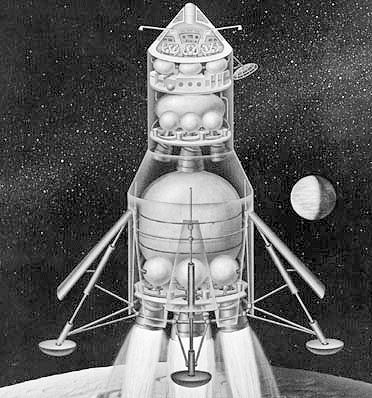 | ||
Direct ascent was a method for performing a manned landing on the Moon proposed in the United States for the Apollo program. It would have required developing an enormous launch vehicle, either the Saturn C-8 or Nova rocket, to launch the three-man Apollo spacecraft, with an attached landing module, directly to the Moon, where it would land tail-first and then launch off the Moon for the return to Earth. The other two options that NASA considered required a somewhat smaller launch vehicle, either the Saturn C-4 or C-5. These were Earth Orbit Rendezvous, which would have involved at least two launches to assemble the direct-landing and return vehicle in orbit; and Lunar Orbit Rendezvous (LOR), which carried a smaller two-man lunar lander spacecraft for flight between lunar orbit and the surface. LOR was the strategy used successfully in Apollo.
The Soviet Union also considered several direct ascent strategies, though in the end they settled on an approach similar to NASA's: two men in a Soyuz spacecraft with a one-man LK lander. The failure of the Soviets' N1 rocket delayed their lunar program substantially, however, and they were nowhere close to a successful N1 launch when Apollo 11 lifted off and made the first manned lunar landing. The Soviets had planned to use an LK, which looked much like a smaller version of the spider-like Lunar Module, although OKB-52 continued to develop the UR-700 modular booster for the direct ascent LK-700 ship.
Science fiction movies such as Destination Moon had frequently depicted direct ascent missions.
